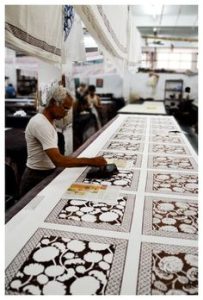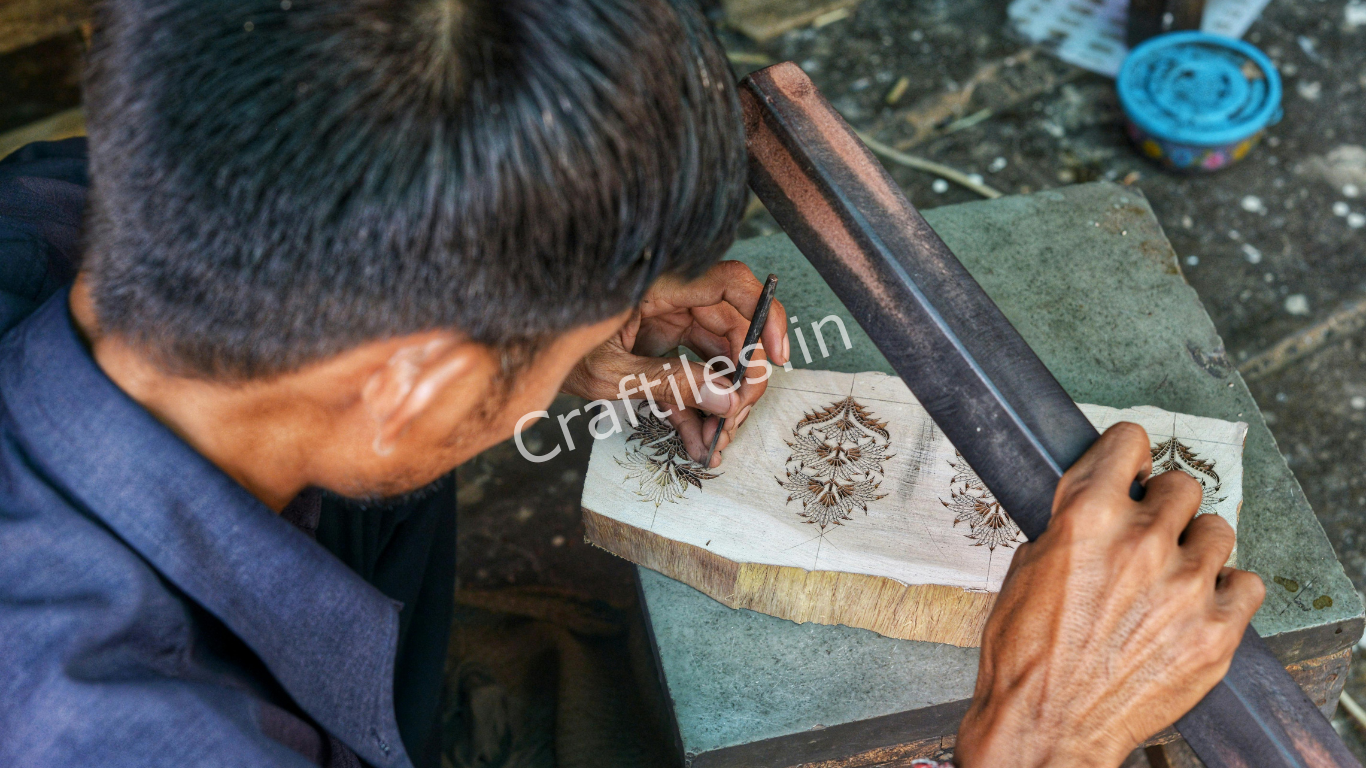A Timeless Tale: The History of Sanganeri Hand Block Printing
Jaipur, the “Pink City,” is a vibrant tapestry of history, culture, and exquisite craftsmanship. Among its many treasures lies the art of Sanganeri hand block printing, a centuries-old tradition that continues to captivate the world with its beauty and intricate designs. Today, at jaipurdharohar.com, we embark on a journey through time, exploring the rich history of this timeless art form.
The Seeds are Sown: 16th Century Beginnings
The story of Sanganeri hand block printing takes root in the 16th century. The town of Sanganer, nestled just south of Jaipur, is credited with birthing this exquisite craft. Some believe skilled artisans from Gujarat, known for their mastery of block printing, migrated to Sanganer, bringing their expertise with them. Others suggest that the art form was fostered under the patronage of Maharaja Sawai Jai Singh II, the founder of Jaipur. Regardless of its exact origin, Sanganer provided the perfect setting for this craft to flourish. The abundance of water in the region was crucial for the dyeing process, a vital step in creating the vibrant colors that define Sanganeri prints.
 Royal Patronage and Flourishing Trade: 18th & 19th Centuries
Royal Patronage and Flourishing Trade: 18th & 19th Centuries
The 18th and 19th centuries witnessed a golden age for Sanganeri hand block printing. The art form flourished under the patronage of the Rajput royalty. The exquisite fabrics, adorned with intricate floral motifs, geometric patterns, and even depictions of animals, became a coveted possession among the elite. The demand extended beyond the royal courts. Sanganeri prints gained immense popularity across India, and the town of Sanganer evolved into a bustling center for textile production. During this period, the Chippa community, traditionally skilled in dyeing and printing, emerged as the custodians of this craft. Their families passed down the knowledge and techniques through generations, ensuring the continuity of this precious heritage.
A Global Recognition: The British Raj and Beyond
The arrival of the British Raj marked another significant chapter in the history of Sanganeri prints. Sir George Watt, in his 1902 publication, famously declared Sanganer the “capital of hand block printing.” The vibrant textiles became a coveted export of the East India Company, finding their way to markets across the globe. This recognition brought international fame to Sanganeri prints, solidifying their place as a symbol of Indian artistry.
A Legacy Endures: 21st Century and Beyond
Today, Sanganeri hand block printing continues to thrive. Though facing challenges from mass-produced textiles, the dedication of skilled artisans and the growing appreciation for handcrafted goods are keeping the tradition alive. Modern designers are rediscovering the beauty of Sanganeri prints, incorporating them into contemporary fashion and home decor. At jaipurdharohar.com, we are proud to be custodians of this legacy. Our Sanganeri hand block printed creations embody the rich history and exquisite artistry of this timeless craft.
**This is just a glimpse into the captivating history of Sanganeri hand block printing. As you explore Jaipur and its surroundings, keep an eye out for workshops practicing this age-old art. Witnessing the meticulous process, from carving intricate blocks to the rhythmic stamping on fabric, is an experience that transcends time.


